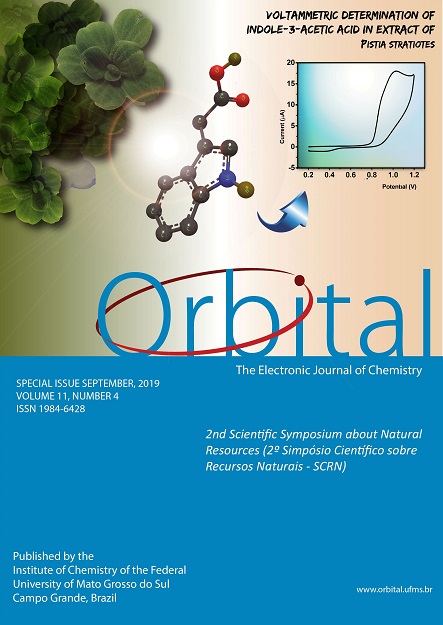- cyclic voltammetry,
- square wave voltammetry,
- Pistia stratiotes extract,
- carbon paste electrode
Copyright (c) 2019 Orbital: The Electronic Journal of Chemistry

This work is licensed under a Creative Commons Attribution-NonCommercial-NoDerivatives 4.0 International License.
Abstract
A simple, fast and direct method to determine indole-3-acetic acid (IAA) was developed using a carbon paste electrode (CPE) as working electrode and square wave voltammetry (SWV) as an electrochemical method. The experimental and instrumental parameters were optimized taking into account the values that provided the best performance in terms of peak current intensity of IAA, being the best values for: pH 1.8, Pulse amplitude (mV) 25, Step potential (mV) 12.5, Frequency (Hz) 80. After this, an analytical curve was obtained in the concentration range of 1 - 12 x 10-6 mol L-1. From the analysis of the curve the limits of detection and quantification were determined, obtaining the following values, 45.73 x 10-9 mol L-1 and 152.44 x 10-9 mol L-1, respectively. Using the methodology developed, the amount of IAA present in the Pistia stratiotes extracts was determined. To eliminate possible interferences the standard addition method was performed, using 100 μL of P. stratiotes extract, fortified with different concentrations of the analytical standard of the IAA. Was found in average of 0.13±0.01 μg/g (IAA/plant) in the extracts (n = 2). The present investigation shows that the complex matrix does not interfere in the proposed method, reinforcing the applicability of the electrochemical sensors in real samples.


